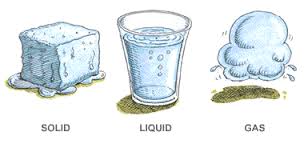I am going to remain on course with my series of short articles or tidbits on Transaction SQL math functions. Most, if not all, of these functions have been in the product before the release of SQL Server 2005. I am very proud of my daughter making the advance math class in sixth grade. I am dedicating these blogs to her hard class work and love of the subject. I will be exploring the POWER() function today. This function takes two expressions, a base B and a exponent/power N, as…
Tag: TSQL
Math Functions – SIGN()
I am going to press on with my series of short articles or tidbits on Transaction SQL math functions. Most, if not all, of these functions have been in the product before the release of SQL Server 2005. I am very proud of my daughter making the advance math class in sixth grade. I am dedicating these blogs to her hard class work and love of the subject. I will be exploring the SIGN() function today. This function takes as input a expression in either exact numeric or approximate numeric…
Math Functions – PI()
I am going to stick at writing my series of short articles or tidbits on Transaction SQL math functions. Most, if not all, of these functions have been in the product before the release of SQL Server 2005. I am very proud of my daughter making the advance math class in sixth grade. I am dedicating these blogs to her hard class work and love of the subject. I will be exploring the PI() function today. This simple function returns the mathematical constant of PI as a float. This function…
Math Functions – ROUND()
I am going to keep going with my series of short articles or tidbits on Transaction SQL math functions. Most, if not all, of these functions have been in the product before the release of SQL Server 2005. I am very proud of my daughter making the advance math class in sixth grade. I am dedicating these blogs to her hard class work and love of the subject. I will be exploring the ROUND() function today. This function takes as input a expression in either exact numeric or approximate numeric…
Math Functions – FLOOR()
I am going to carry one with my series of short articles or tidbits on Transaction SQL math functions. Most, if not all, of these functions have been in the product before the release of SQL Server 2005. I am very proud of my daughter making the advance math class in sixth grade. I am dedicating these blogs to her hard class work and love of the subject. I will be exploring the FLOOR() function today. This function takes as input a expression in either exact numeric or approximate numeric…
Math Functions – CEILING()
I am going to continue my series of short articles or tidbits on Transaction SQL math functions. Most, if not all, of these functions have been in the product before the release of SQL Server 2005. I am very proud of my daughter making the advance math class in sixth grade. I am dedicating these blogs to her hard class work and love of the subject. I will be exploring the CEILING() function today. This function takes as input a expression in either exact numeric or approximate numeric form. This…
Math Functions – ABS()
I am going to start a series of short articles or tidbits on Transaction SQL math functions. Most, if not all, of these functions have been in the product before the release of SQL Server 2005. I am very proud of my daughter making the advance math class in sixth grade. I am dedicating these blogs to her hard class work and love of the subject. I will be exploring the absolute values, ABS() function today. This function takes a expression in either exact numeric or approximate numeric form and…
Page Anatomy – Part 2
I am going continue my series of articles describing how information is stored and organized in a Microsoft SQL Server database. Today, I am going to talk about the Database Boot Page. All of the information is a gleamed from SQL Server 2008 Internals book by Kalen Delaney. If it is not on your bookshelf, I suggest you go out and by a copy. The online MCM training videos from Paul Randal are also an excellent resource. A single page (8K) is the smallest unit in which SQL Server allocates…
Page Anatomy – Part 1
I am going start a series of articles describing how information is stored and organized in a Microsoft SQL Server database. Today, I am going to talk about the File Header Page. Every database is defined by at least two file types. The first file type is one primary (*.mdf) data file with zero or more optional secondary (*.ndf) data files. The second file type are log (*.ldf) files. We will be looking at the primary data file during these talks. All of the information is a gleamed from SQL…
Conversion Functions – TRY_PARSE()
I am going to bring closure to my series of very short articles on type conversion functions available in the Transaction SQL (T-SQL) language. One analogy of a data type conversion is apply the correct action to change the physical form of water (H2O). You can convert water to ice by cooling it. You can convert water to vapor by heating it. However, the chemical composition of water is still the same! Information is stored in a database as rows in a table. Each field in a table is defined…

